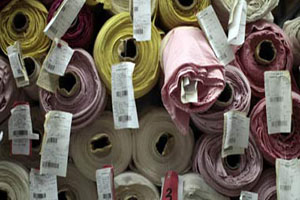
India sought clarification from the WTO on phasing out the subsidy for textile exports
YarnsandFibers News Bureau 2015-01-03 15:00:00 – New DelhiIndia’s textile and garments sector employ over 35 million people and accounts for over 12% of its total exports. The export subsidies offered by India for Textile and Clothing are under certain heads such as the Focus Market Scheme, Focus Product Scheme (FPS), market-linked FPS, Export Promotion Capital Goods Scheme, interest subvention on pre- and post-shipment export credit as well as tax breaks for special economic zones.
As per the WTO’s Agreement on Subsidies and Countervailing Measures, when the share of a developing country with per capita income below $1,000 a year in global exports touches 3.25% in any product category for two straight years, thereby gaining “export competitivenessâ€, it has to phase out export subsidies for the items eight years from the second year of breach. In case of nations with higher income levels, such subsidies are a strict no-no.
According to the WTO rule book, export competitiveness shall exist either (a) on the basis of notification by the developing country member having reached export competitiveness, or (b) on the basis of a computation undertaken by the (WTO) Secretariat at the request of any member.
Countries like the US contend that India’s “textiles and clothing†(T&C) exports first breached the threshold in 2005 and remained above the level in 2006 also and it should, therefore, end its export subsidies for these items by January 2015. India, however, cites the WTO rule book to counter this and insists it has time until January 2018 as the multilateral trade body asked the country to consider phasing out the subsidies for Textile & Clothing only in 2010.
At a time when the textiles sector is reeling under liquidity crunch and poor demand, export subsidies for textiles and garments — the fourth-largest product group in India’s outbound shipment basket — could soon be withdrawn if the country heeds concerns raised by nations, including the US and Turkey, at the World Trade Organization (WTO).
Sources said that India has sought clarification from the WTO on the definition of “product†and the “applicable period of phasing out the subsidy†under the agreement. New Delhi believes that although as a category Textile & Clothing may have exceeded the stipulated trade share level globally, many items within the group may not have attained export competitiveness, and, therefore, need continued support.
However, the commerce ministry feels since the new foreign trade policy will be applicable for the 2015-20 period, export subsidies for the textile and apparel sectors should be phased out mid-way, and if possible, much before 2018. This is because India is keen on honouring its WTO commitments on subsidies. Meanwhile, the ministry wants the textile and garment sectors be given subsidies to incentivize production, rather than exports.
The WTO prohibits subsidies linked directly to exports, but it does not bar production-based subsidies. However, subsidies for production fall in the “actionable†category where the affected importing country can impose countervailing duties to offset the disadvantage to its local manufacturers due to the cheaper imported item.
Since the general WTO norms permit import duty neutralization for exports, the duty drawback scheme available for the sector will not be affected. Moreover, schemes such as technology mission on cotton and the technology upgradation fund scheme are also unlikely to be hit as they are ultimately meant for incentivizing production.
DK Nair, secretary-general of the Confederation of the Indian Textile Industry said that if the government decides to stop export subsidies completely in 2015 under international pressure, the textile industry will face serious trouble. Exports in many textile segments have been under pressure (Cotton yarn shipments dropped 16% between April and October from a year before) due to a poor demand from top consumer China, while the growth in cotton garment exports is also slowing.
Moreover with the domestic cotton prices are still higher than the global levels, and producers are facing problems in passing on costs to consumers in many segments, as demand remains subdued.
Market Intelligence
Ask for free sample Report

experience
Customer Base
dedicated team
Countries Served Worldwide









